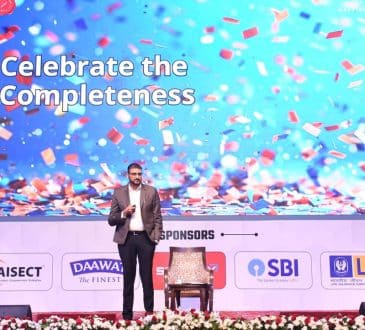Future Computer Models Under AI Conditions

What will the future of computers look like? Can we anticipate these futuristic products today? The answer is actually yes.
Information analysis often employs a window observation method to predict future trends. This year, such a “window” comes from Samsung. On January 17, the South Korean tech giant officially hosted its annual flagship product launch event in San Jose, California. During this event, Samsung introduced the world’s first artificial intelligence (AI) smartphone, the Galaxy S24 series. The product series boasts multiple AI functions, including AI instant simultaneous translation, AI note organization, and “Circle to Search”.
As a smartphone, the most crucial function is, of course, making calls. During the event, Samsung introduced a remarkable feature of “Galaxy AI”, which could almost render all the world’s simultaneous interpreters jobless. This is the voice instant interpretation + text translation function of the AI Samsung smartphone. According to Samsung Electronics, this feature currently supports 13 languages, including Chinese, Korean, English, French, German, Hindi, Italian, Japanese, Polish, Portuguese, Spanish, Thai, and Vietnamese. Thanks to artificial intelligence technology, this Samsung phone breaks through language barriers by providing synchronous translation within a certain range. This means that a Chinese person using this Samsung phone can communicate in Chinese with people around the world who speak different languages, without any language comprehension issues.
The Biblical story of the Tower of Babel sees the “confusion of tongues” as a divine punishment. Now, AI has finally overcome this punishment, allowing humanity to return to a virtualized common language. Samsung’s launch of this AI phone is equivalent to issuing a challenge to its competitors, significantly raising the benchmark for the next generation of smartphones. Those smartphone manufacturers that lack real AI technology and rely on brand marketing are expected to suffer greatly. According to the prediction of data provider Canalys, although only 5% of smartphones will support AI to some extent in 2024, by 2027, this proportion will increase to 45%.
Looking at the future computer from the perspective of Samsung’s AI smartphone, the computer notebook model under the condition of AI will have the following performance design features:
- Natural language will replace the keyboard: Communication and operation between humans and computers will be completely done using natural language, and this will be the means to control and drive the computer.
- The two major operating systems will face new intensified competition: The all-powerful Microsoft Windows and Apple’s OS system will face significant challenges. A new natural language operating system with sufficient AI functionality will become the core of future notebooks.
- The hardware design template will move more toward today’s iPad, rather than a foldable notebook model with a keyboard.
- This model shall be the world’s first truly barrier-free computer in terms of language. It will be like a robot, seamlessly accompanying users, working together at all times, and even working with people around the world who speak different languages.
- This model is capable of transforming the current notebook computer into a future AI terminal device. Its main supporting devices will be headphones and various wireless broadband interfaces.
- AI requires all existing applications on computers to be fully “re-intelligentized.” Future market demand must introduce natural language functionality.
- External devices and other hardware must adapt to the era of AI and establish natural language interfaces to keep up with the trend.
- This computer model, due to the existence of AI technology, has astonishing self-learning abilities. It can provide better work capabilities for humans.
Obviously, this terminal model will create a new AI hardware platform, not only providing possibilities for the future development of computer manufacturers like Lenovo but also indicating the direction for the future AI transformation and competition of electronic products.
It is indeed thrilling to envision such a computer in our future world. In the last century, “personified” devices were usually only a topic of discussion among a few forward-thinking experts with advanced technological capabilities. However, with the remarkable progress in AI technology, “personified” electronic devices are on track to become a fundamental feature of our technology.
How long will it take for such a computer model to become a reality? Judging from the development template of AI smartphones, the development speed should be similar. In my estimation, by 2027, many relatively mature products will be available for commercial application. I believe that the large-scale tidal wave-like application will be in 2030. Perhaps by then, we may even see new companies emerging to replace Microsoft or Apple computers and dominate the global electronic device market.
Written by Chan Kung.
Have you read?
The world’s largest economies in 2023.
Ranked: Safest Countries in the World, 2023.
Countries With the Most Female Billionaires, 2023.
Economy Rankings: Largest countries by GDP, 2023.
The Global Passport Index: The World’s Most Powerful Passports.
Richest countries in the world by GDP per capita in 2023.
Bring the best of the CEOWORLD magazine's global journalism to audiences in the United States and around the world. - Add CEOWORLD magazine to your Google News feed.
Follow CEOWORLD magazine headlines on: Google News, LinkedIn, Twitter, and Facebook.
Copyright 2025 The CEOWORLD magazine. All rights reserved. This material (and any extract from it) must not be copied, redistributed or placed on any website, without CEOWORLD magazine' prior written consent. For media queries, please contact: info@ceoworld.biz








